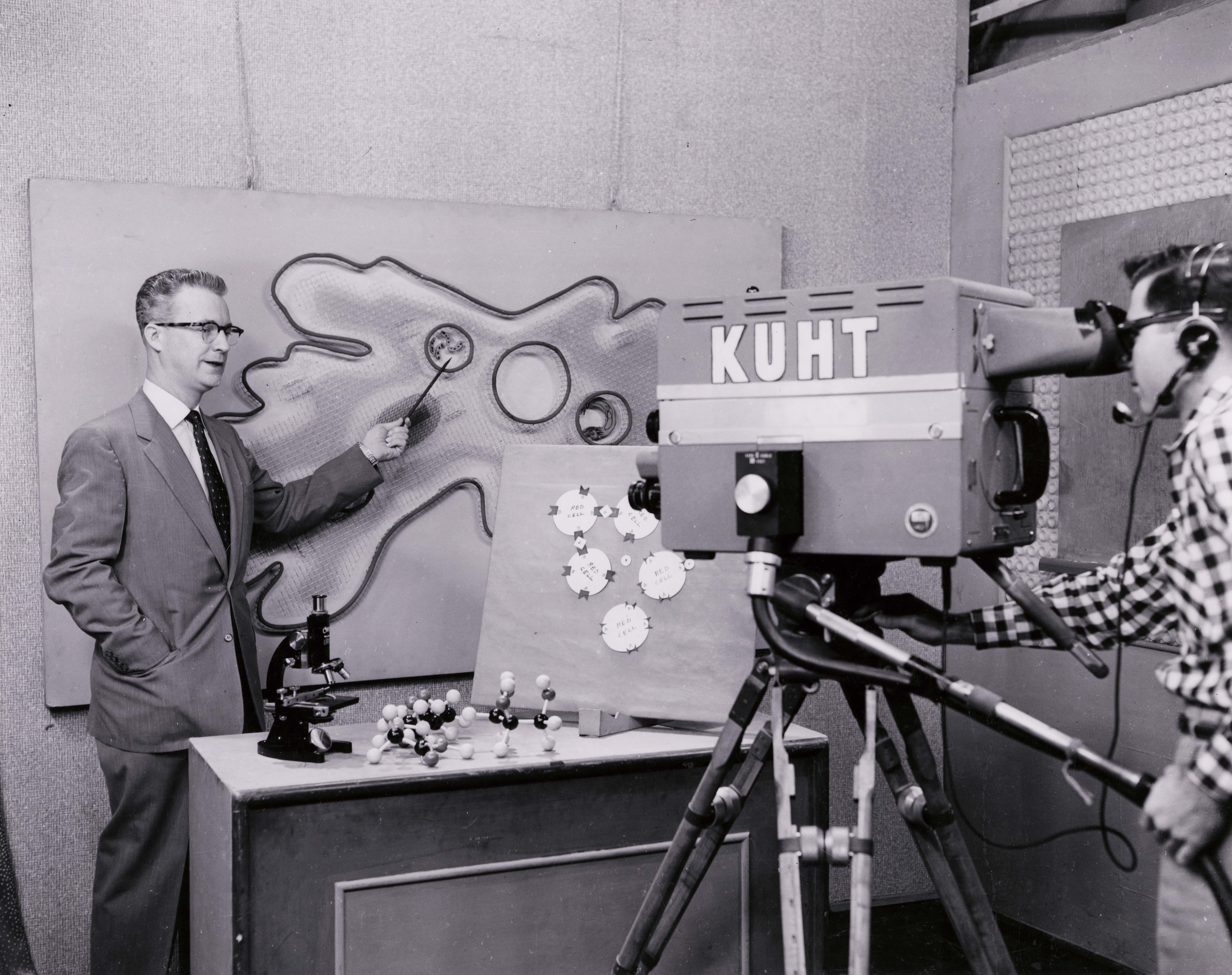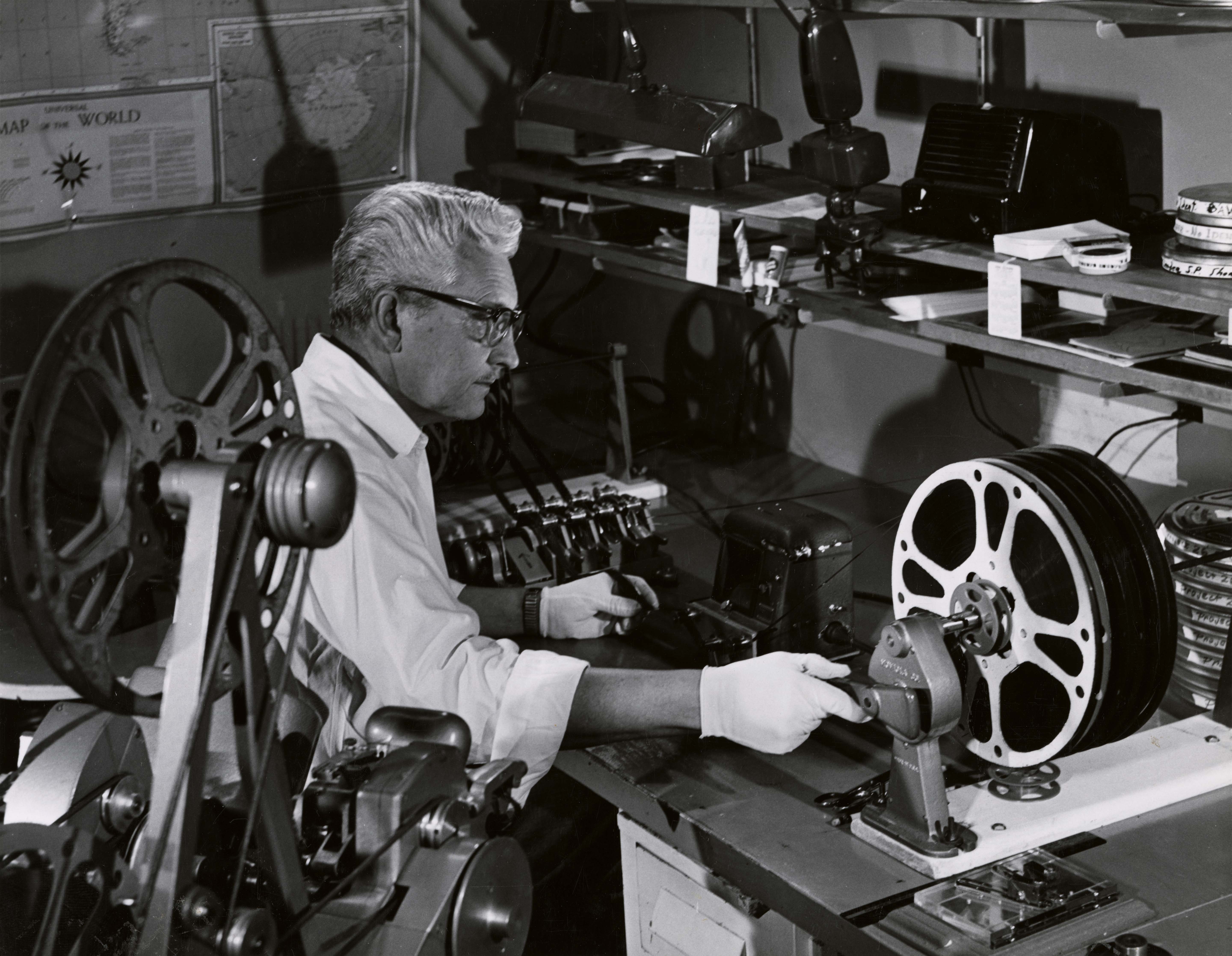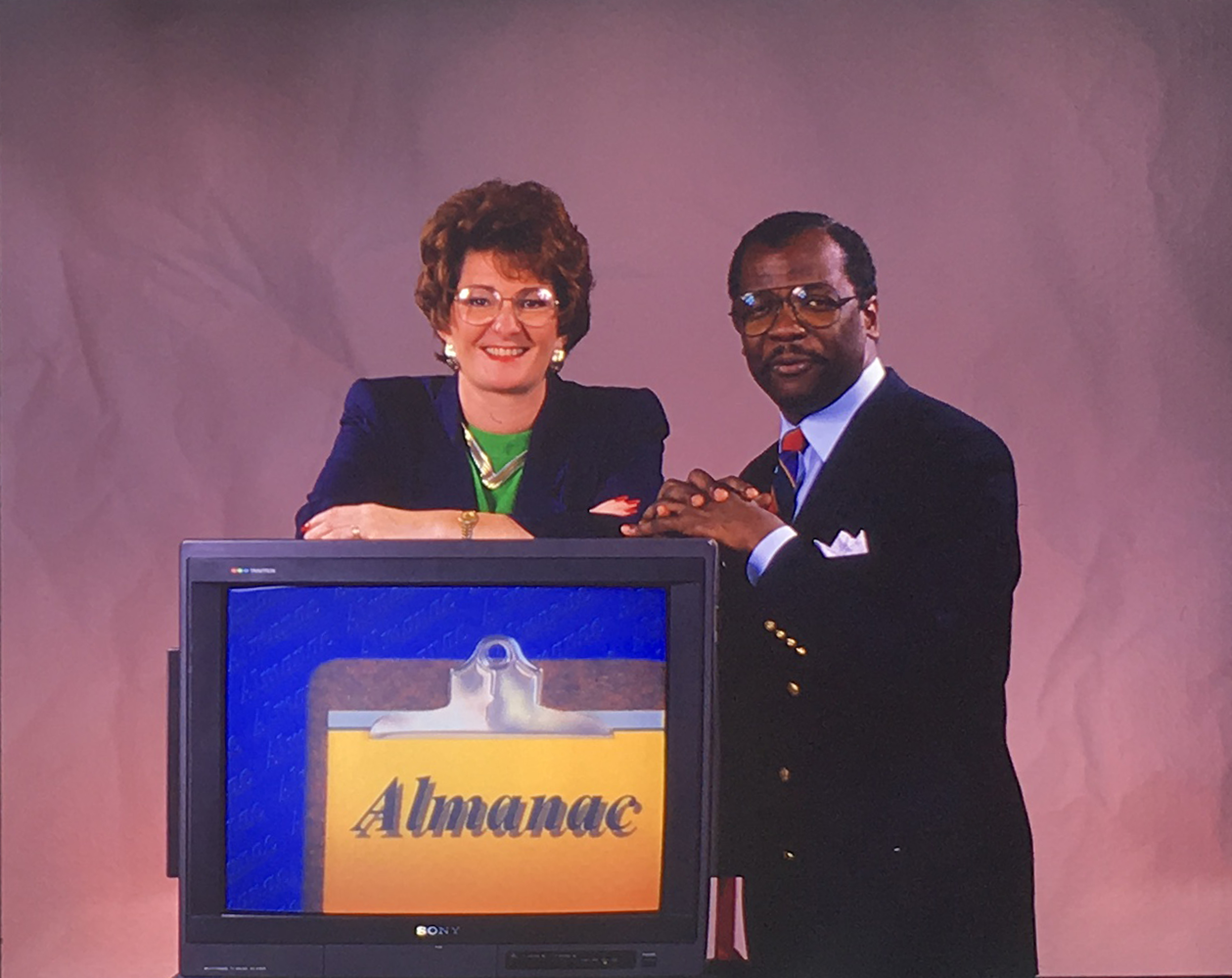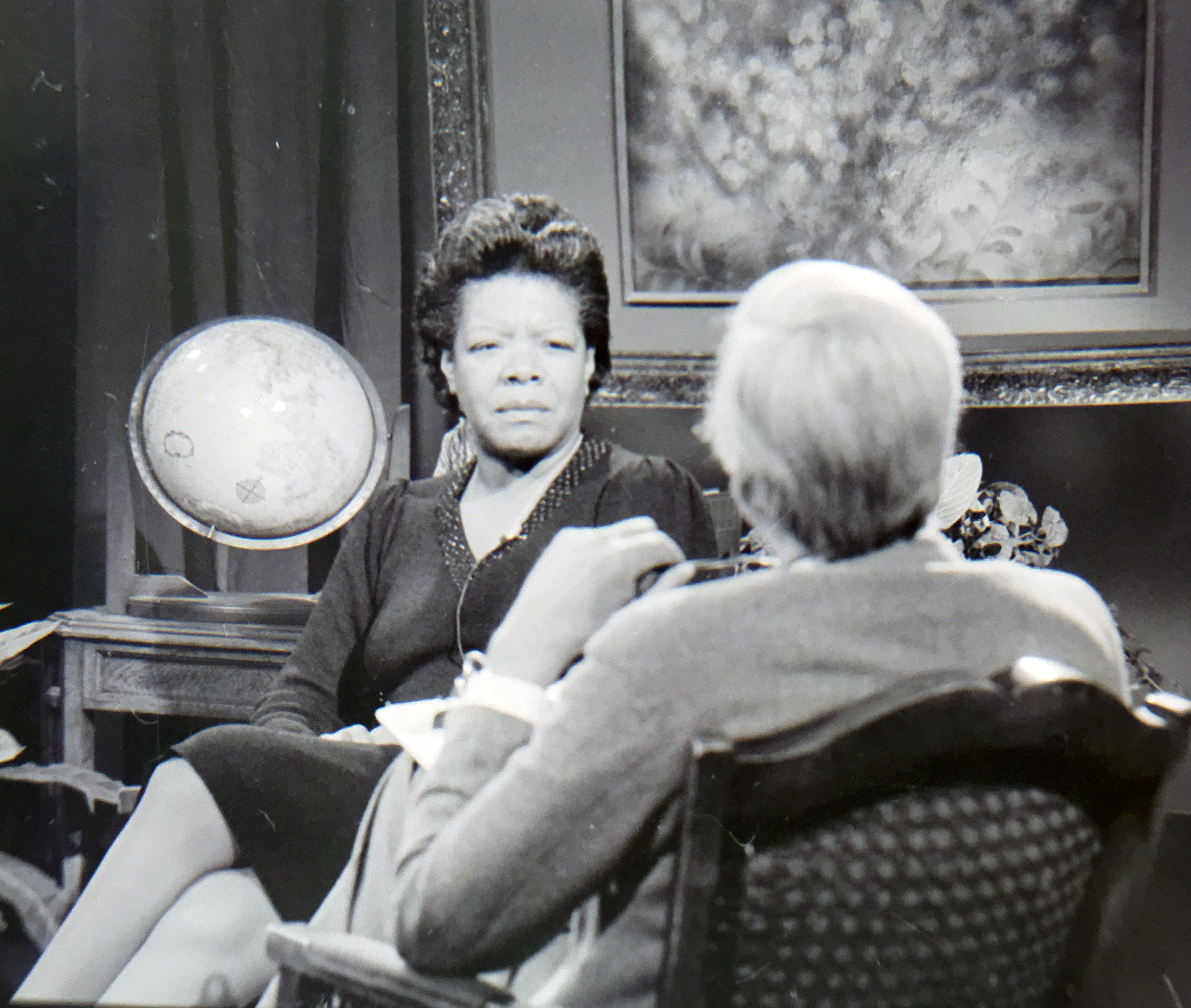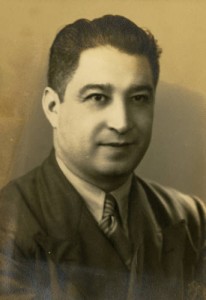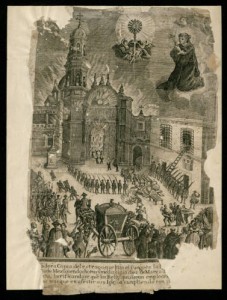
University of Houston Libraries Special Collections is pleased to announce the recent addition of 112 digitized films from the KUHT Film and Video Collection to the Audio/Video Repository. The films, dating between 1953 and the 1970s were digitized with the generous support of the CLIR Recordings at Risk grant. These films represent some of KUHT-TV’s earliest productions and include examples of the United State’s nascent educational and public television system.
KUHT’s first aircheck took place on May 25, 1953. The station began broadcasting the following month, making it the United States’ first educational, non-profit television station to go on air. KUHT was a pioneering influence in the field of “tele-education,” creating for-credit college courses. Included in these recently digitized materials are several of Dr. H. Burr Roney’s biology courses, which went on the air in the station’s first year. By 1958, the freshman biology telecourse “had the greatest enrollment of any standard college course given by television at any school in the nation.” ¹
In the 1960s, KUHT moved away from the production of for-credit college courses but continued to produce elementary education programs in partnership with the Houston Independent School District, as well as content for the enrichment of all viewers. Many KUHT productions documented the activities of the University of Houston and the Gulf Coast region.
Highlights include from the recently digitized materials include:
- Episodes of Target Delinquency, a series produced to inform viewers about the threat of juvenile delinquency with funding from President Kennedy’ Juvenile Delinquency and Youth Offenses Control Act of 1961.
- Episodes of The Way It Is, which educated viewers about financial issues facing consumers
- Surprisingly engaging live kinescope recordings of meetings of the Houston Independent School District
- Campus activities and events such as campus scenes from the 1950s, a university promotional film, the UH football team, and members of the UH dance team.
This Is Our Home, It Is Not for Sale (This Is Our Home) is the title of Jon Schwartz’s 1987 documentary film that chronicles Houston’s Riverside neighborhood. While it is the story of a specific neighborhood in Houston, the themes of segregation, integration, white flight and disparity of city services are common elements in the history of many large American cities. This Is Our Home, which boasts an impressive 3 hour and 20 minute run time, includes interviews with some of Houston’s most famous and influential residents. The University of Houston Library Special Collections is home to the This Is Our Home, It Is Not For Sale Film Collection, which includes Schwartz’s original production documents, photographs, and production films, including B-roll footage and early edits of the documentary.
The original production used a dual reel system of motion picture and a separate fullcoat magnetic soundtrack that requires syncing to achieve a digitized video product. These films were at particular risk of loss due to the use of fullcoat magnetic soundtrack in production, making it susceptible to extreme vinegar syndrome. The films, used in the editing process, also featured numerous splices and missing portions which were utilized in edits of the documentary. In 2017, The University of Houston Libraries was awarded a Texas Libraries and Archives Commission TexTreasures grant to digitize 112 filmed interviews, and make them available via our AudioVisual Repository. These raw interviews provide insights both into the former and current residents opinions of the neighborhood that had undergone a drastic transition, they are primary documents of individuals struggling to discuss the complexities of race relations and emotional attachments to “home.”
The Story of Riverside
In the 1920s, members of Houston’s wealthy Jewish community were blocked from home ownership in Houston’s elite River Oaks neighborhood by anti-Semitic deed restrictions. In response to these restrictions, the community helped to establish the affluent Riverside neighborhood, located to the west of University of Houston’s central campus. The neighborhood, inhabited by Jewish and non-Jewish residents, became the center of Jewish culture in Houston and was home to many influential Houston families. In 1952, Jack Caesar, a wealthy cattle rancher, moved to Riverside by instructing his white secretary to buy a home and transfer the deed over to Caesar, defying deed restrictions that blocked black individuals from purchasing homes in the area. His arrival on Wichita Street was first met with a buyout offer from neighbors who had pooled their money. Caesar refused the offer, and a dynamite bomb was detonated on the porch of the Caesar family’s home. Unharmed and undeterred, the family remained in Riverside. With landmark Supreme Court cases including District of Columbia v. John R. Thompson Co. Inc. (1953) and Brown v. Board of Education (1954) finding segregating policies unlawful, more affluent black families bought homes in the neighborhood.
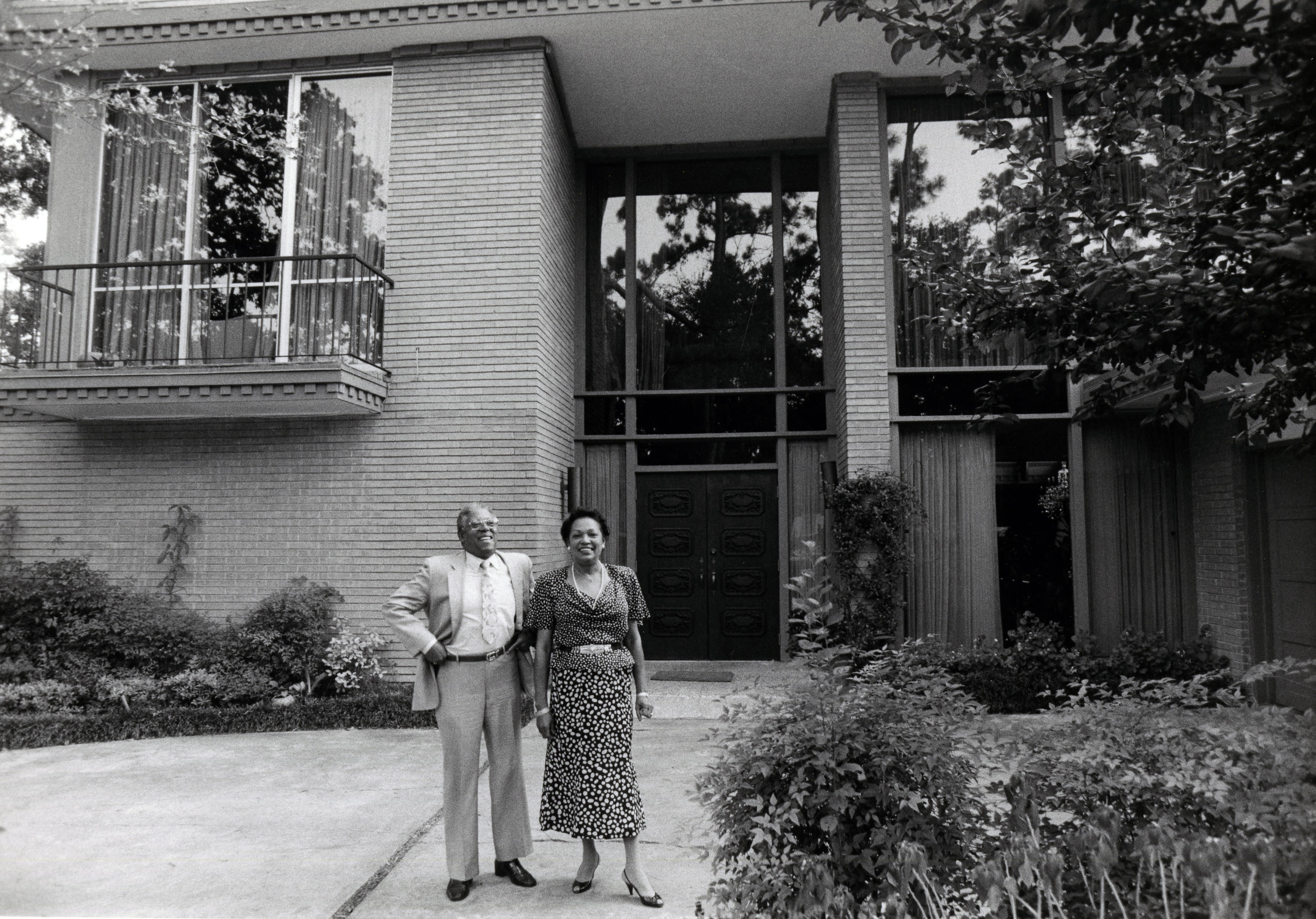
John and Drucie Chase standing in front of their Riverside home, designed by John Chase. From the This Is Our Home, It Is Not For Sale Film Collection.
In response to the influx of black residents and spurred on by unscrupulous real estate agents instigating anxieties about falling home values, many white residents sold their homes and moved to other areas of the city. Residents who hoped to maintain the neighborhood as an integrated community began a yard sign campaign that proclaimed “This Is Our Home, It Is Not for Sale.” While this movement gained national attention, it was not enough to slow the departure of white homeowners. Riverside continued to be shaped by forces including the departure of area businesses, the growth of UH and TSU campuses, construction of Highway 288, and the decision to locate a county psychiatric hospital in the neighborhood. In the late 1980s, white homebuyers attracted by Riverside’s beautiful homes, central location, and reasonable prices, began moving back into the area.
Through interviews with former and current residents of Riverside, This Is Our Home examines how anti-Semitism, racism, real estate agent-driven blockbusting, profiteering, white flight, and urban development projects created and continue to shape what was once one of the Houston’s most desirable neighborhoods.
Now Online
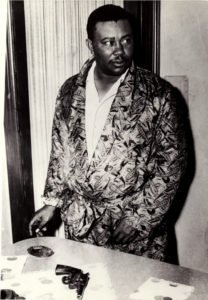
Jack Caesar, photographed with personal firearm following the bombing of his home (This Is Our Home, It Is Not For Sale Film Collection).
It is our hope that these materials will serve as a valuable resource, in complement to Schwartz’s documentary, and aid in scholarship around Houston. These primary source materials that trace the waves of segregation and desegregation dynamics in a large southern city and reveal the tensions related to population growth and demographic shifts. Not only do they document a segment of Houston history, but they also provide a profile of urban development with implications beyond the city and the region. Likewise, architectural historians, urban planners, historical geographers, and public administrators figure among the populations who may benefit from access to the complete, raw interviews.
All digitized raw interviews are available through the UHL Audiovisual Repository, and we have curated an online exhibition featuring an interactive map of the neighborhood highlighting interviews with Riverside’s residents. The full documentary can be viewed in the Special Collections Reading Room or purchased at http://thisisourhomeitisnotforsale.com/.
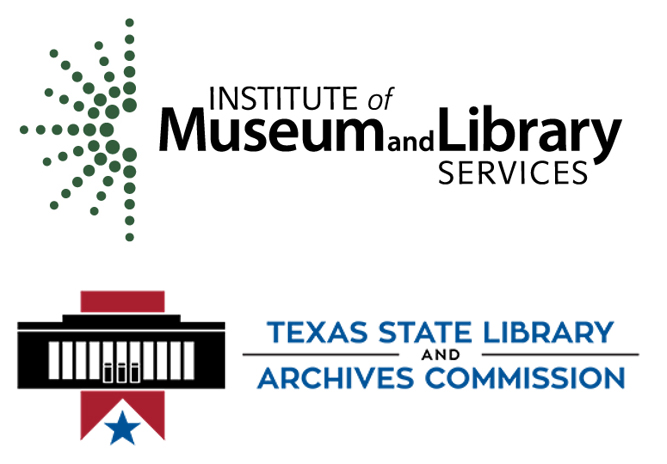
The Institute of Museum and Library Services generously funds a “grants to state program,” which uses a population-based formula to distribute funds to State Library Administrative Agencies across the country. In Texas, these funds are distributed via several different types of competitive grants, including TexTreasures, which is designed to help libraries make their special collections more accessible for the people of Texas and beyond.
University of Houston Special Collections is pleased to announce the online publication of over 500 recently digitized videos from the KUHT Collection. These videos, accessible via the newly unveiled UHL AV Repository, were digitized with funds from the Institute of Museum and Library Services’ TexTreasures grant, administered by the Texas State Library and Archives Commission.
Included in the project are several significant series and documentaries produced by KUHT between 1971 – 2000. One series, Almanac, tackled some of the major political and social issues facing Houston in the 1990s, including complex questions of race, gender, and economic inequality. Episodes such as those that cover the Harris County Grand Jury decision not to indict a Houston Police Department officer in the shooting of Byron Gillum and a discussion of the ban on homosexuals serving in the military exemplify the program’s willingness to pursue tough issues. Notable figures, such as Mayor Sylvester Turner, made several appearances on the program early in his political career, and even President Jimmy Carter appears alongside Dominique de Menil to discuss the Carter-Menil Human Rights Prize.

All materials digitized were previously inaccessible due to their obsolete video formats, such as this U-matic video.
Another significant series, The Capitol Report, features interviews with Texas legislators discussing issues that remain of great importance today. Representation, prison reform, and education are just a few of the topics that are covered, and many guests will be familiar to those who follow Texas politics today.
Several noteworthy documentaries and feature programs were also digitized under the TexTreasures grant, such as Houston in the Age of AIDs (1985) and Wetlands (1991).
In addition to full episodes available on the AV Repository, an online exhibit created by graduate student Carolann Madden contextualizes the many series featured online: http://exhibits.lib.uh.edu/exhibits/show/kuht-textreasures, and includes contemporary documents from the KUHT Collection.
The following piece appears courtesy of Dan Johnson, 2013 Mosaic Fellow, wherein he provides a look at a sampling of projects benefiting from his internship with the University of Houston Special Collections.
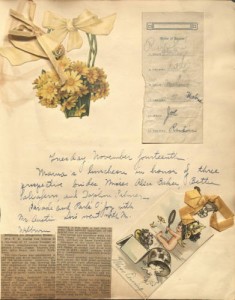
A full dance card (Gladys Ewing’s 1911 Houston Society Scrapbook, The Ewing Family Papers)
I was selected as a Mosaic Fellow in the Fall of 2013 by the Association of Research Libraries and the Society of American Archivists. I’m presently a MSLS student at the University of North Texas, studying Archival Studies and Digital Image Management. The Mosaic Fellowship included an internship component, pairing up fellows with host ARL institutions; I was glad to have the opportunity to intern here at UH Special Collections since September 2014. I’ve since had the pleasure of working on a variety of special projects, working hands on with archival materials.
I first started a digital audit of the Ewing Family Papers, comparing the physical archival collection to its finding aid and existing digital collection. In that review of the Ewing family scrapbooks, I worked with Valerie Prilop, Digital Collections Librarian, and we discovered that the finding aid for one of the scrapbooks provided descriptions for only the front side of each scrapbook page, but did not describe the reverse side, while the digital collection had page-level descriptions for both front and back sides of the pages. Ultimately, we were able to identify places where the finding aid could be improved, and we made some recommendations to combine two digital collections, one per scrapbook, into a single consolidated digital collection, a project for a later date.
I then started a project under the guidance of University Archivist Mary Manning, processing and describing additions to the William C. Moffit Papers. The collection was originally donated by Dr. Moffit himself, but several additions were later donated by his wife and family after he passed away. I was able to process and describe some additional manuscript parts, published musical arrangements, and Patterns of Motion training materials, among other things. Working with a member of the faculty from the School of Music who was intimately familiar with Dr. Moffit’s work helped me better describe and arrange the materials in a way that will make the most sense to researchers using this collection.
I started work on a third project with Hispanic Collections Archivist Lisa Cruces, auditing the physical material of the Alonso S. Perales Papers and comparing the physical archival collection to the finding aid. There were a handful of items in the physical collection that were not reflected in the finding aid, and I have been correcting the finding aid to more faithfully represent the collection.
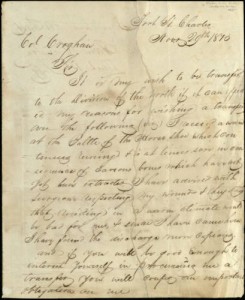
Request for transfer to a unit in the north signed by Sam Houston (November 29, 1813, Early Texas Documents Collection)
Most recently, I’ve been given the opportunity to work with Librarian Emerita Pat Bozeman on a project transcribing and contextualizing some handwritten letters. Two of these items were taken from the Early Texas Documents collection. One item is a letter from Sam Houston written after he was wounded in the Battle of Horseshoe Bend. It documents his request to be transferred from New Orleans to a more northern location upon the advice of several physicians. Another item is a letter that highlights Stephen F. Austin’s efforts to gather support from the United States government and people for Texas Independence and was written in Nashville, Tennessee days before Texas declared independence from Mexico. Working intimately with historical documents such as these has been a very exciting and rewarding experience.
On this San Jacinto Day, the University of Houston Special Collections is happy to share more exciting developments on the digitization front with the recent publication of the Mexico Documents Collection on the UH Digital Library.
Originally combined from several smaller collections, the Mexico Documents Collection contains government orders, announcements, decrees, pamphlets, and correspondence (both personal and official) dating as far back as 1570 (manuscript on vellum) on into the 20th century. Many of the materials in the collection date from Mexican Independence (1821) through the end of the Mexican-American War (1849), but scholars with research interests in the Mexican Colonial Period or the Mexican Revolution are also likely to find some fertile ground in this collection. Researchers with limited experience in the Spanish language will also be pleased to find a number of the documents accompanied by English translations.
Thanks to this new level of access, scholars around the globe and around the clock browsing through the online collection will turn up the names of Santa Anna de Lopez, Porfirio Diaz, and Jose Joaquin de Hererra. A closer look reveals materials related to American military actions as part of the Mexican-American War, business and land transactions, as well as documents chronicling religion in Mexico.
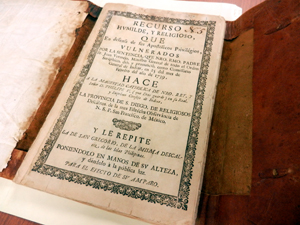
petition from the Barefoot Monks to Philip V, King of Spain (1739, from the Mexico Documents Collection)
While nothing can replicate working with a physical copy of a petition from the Barefoot Monks to Philip V of Spain in the Special Collections Reading Room, the opportunity to share online these types of centuries-old documents alongside more recent materials highlighting distinct periods of Mexican history marks another exciting step for our larger Hispanic Collections. We invite you to enjoy the Mexico Documents Collection and look forward to assisting you in your research, whether online via the Digital Library or offline next time you are able to pay us a visit.
